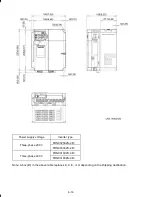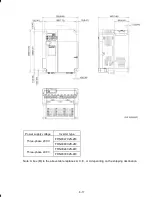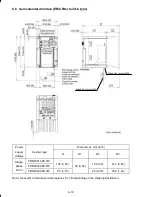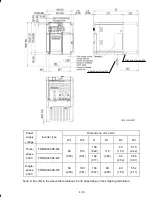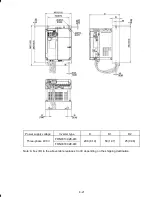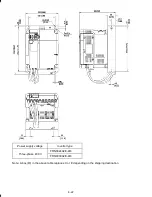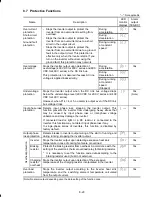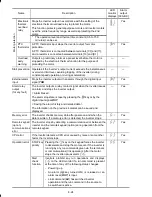
9-4
Name of option
Function and application
Main o
ption
Braking resistors
(Standard model)
(DBRs)
A braking resistor converts regenerative energy generated from deceleration
of the motor and converts it to heat for consumption. Use of a braking
resistor results in improved deceleration performance of the inverter.
DC reactors
(DCRs)
A DCR is mainly used for power supply normalization and for supplied
power-factor reformation (for reducing harmonic components).
1) For power supply normalization
- Use an optional DC reactor (DCR) when the capacity of the power
supply transformer exceeds 500 kVA and is 10 times or more the
inverter's rated capacity.
Otherwise, the percentage-reactance of the power source decreases,
and harmonic components and their peak levels increase. These
factors may break rectifiers or capacitors in the converter section of
inverter, or decrease the capacitance of the capacitor (which can
shorten the inverter’s service life).
- Also use a DCR when there are thyristor-driven loads or when
phase-advancing capacitors are being turned on/off.
2) For supplied power-factor reformation (harmonic component reduction)
Generally a capacitor is used to reform the power factor of the load,
however, it cannot be used in a system that includes an inverter. Using a
DCR increases the reactance of inverter’s power source so as to
decrease harmonic components on the power source lines and reform
the power factor of inverter. Using a DCR reforms the input power factor
to approximately 90 to 95%.
At the time of shipping, a jumper bar is connected across the
terminals P1 and P (+) on the terminal block. Remove the jumper
bar when connecting a DCR.
Output circuit filters
(OFLs)
Include an OFL in the inverter power output circuit to:
1) Suppress the voltage fluctuation at the motor input terminals
This protects the motor from insulation damage caused by the application
of high voltage surge currents by the 400 V class of inverters.
2) Suppress leakage current from the power output (secondary) lines (due
to harmonic components)
This reduces the leakage current when the motor is hooked by long
power feed lines. It is recommended that the length of the power feed line
be kept to less than 400 m (1312 ft).
3) Minimize emission and/or induction noise issued from the power output
(secondary) lines
OFLs are effective in reducing noise from long power feed lines, such as
those used in plants, etc.
Use an OFL within the allowable carrier frequency range specified
by function code F26 (Motor sound (carrier frequency)). Otherwise,
the filter will overheat.


